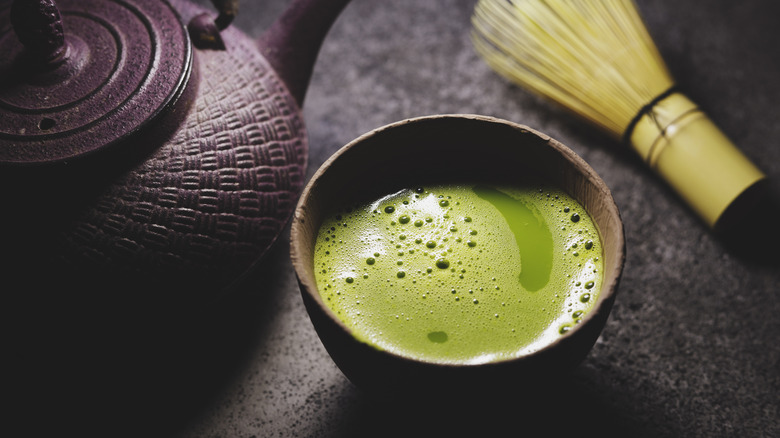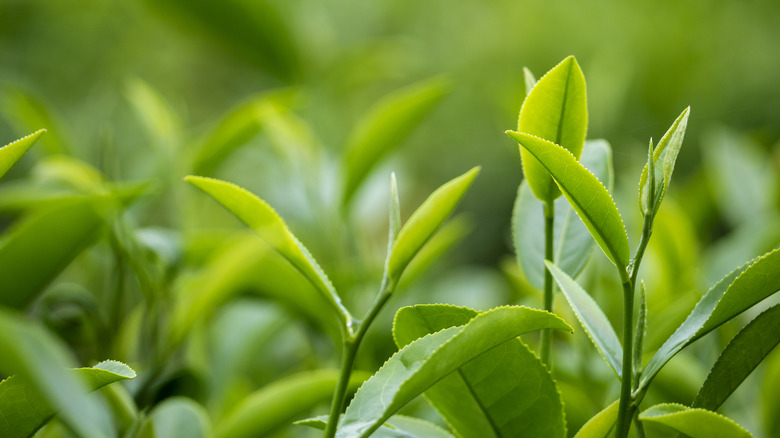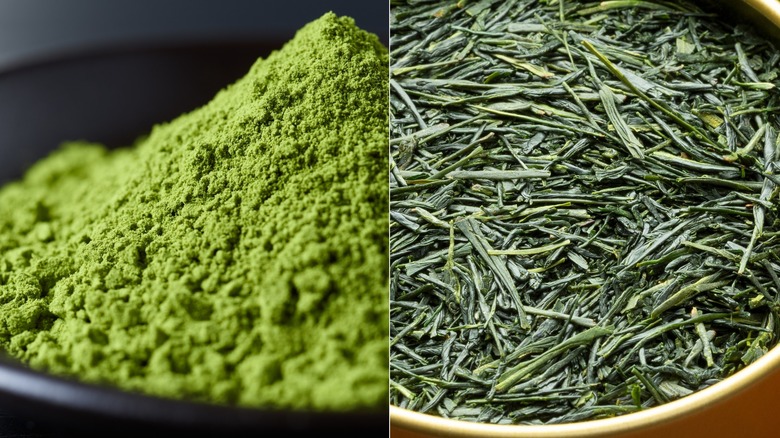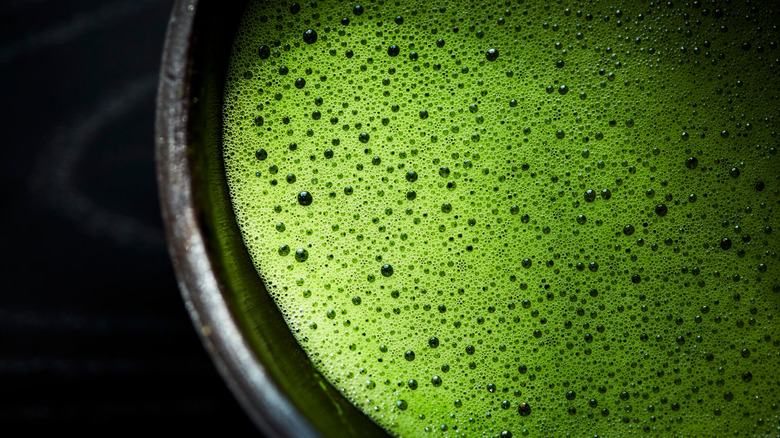Matcha Vs Sencha: What Makes These Green Drinks Different?
The question of tea versus coffee is almost as polarizing as that of cats versus dogs. Surprisingly, though, when you delve deep into the different kinds of coffees and teas that are out there, there's such a big difference that it's kind of like discussing the differences between poodles and St. Bernards. As an example, let's use green tea, one of the healthiest teas out there. At a glance, it's easy to assume that all green tea is created equal, but that's not the case at all. There are some major differences between two of the most popular types, matcha and sencha.
It's also important to know the basics if you're going to start drinking more green tea — which you should. There are some seriously miraculous things green tea can do for your body, but that said, you should know the differences so you'll know exactly what you're getting, what's best for you, and which version you'll prefer.
Matcha and sencha might both be green teas, but they're grown and processed in different ways; they're also sold, consumed, and made in different ways, and they even have different health benefits. Although matcha was once more popular, that's shifted in favor of sencha becoming Japan's most popular green tea. Let's find out what sets them apart.
Matcha and sencha grow in completely different environments
The differences between matcha and sencha start right from the beginning, and they involve a fascinating bit of agricultural science. Sencha comes from plants that have been grown in full sunlight from start to harvest, but matcha, on the other hand, is grown in the shade during the latter stages of growth. That usually means covering plants with tarps, and in some cases — for the most expensive, high-quality matcha — moving the plants to nearly total darkness.
Why? There are a few things that occur when matcha plants are subjected to prolonged periods of darkness. Leaves take on a deeper green color to try to compensate for the loss of light, photosynthesis slows, and that, in turn, increases the levels of amino acids and caffeine present in matcha.
The two plants are also harvested differently. Only the newest, youngest matcha leaves are picked from the plant, while sencha is harvested with the removal of stems, shoots, and leaves — all of which are then dried and rolled. All these factors converge to make a sencha that's slightly more bitter and a matcha that has more of a savory umami flavor.
They're processed and prepared differently
Placing raw matcha and sencha alongside one another is the best way to see how different they are: Matcha is made into a powder, while sencha is left in a leaf form that's dried and rolled into a needle shape. When sencha is processed from plant to leaf, it still includes the stems, while matcha does not. Matcha powder is dissolved in hot water, whereas sencha leaves are steeped in it, and interestingly, this means that those who opt for drinking matcha are actually getting more of the tea's benefits.
Since sencha leaves are only steeped, that means some of their goodness — like the antioxidants that tea is so popular for containing — is left behind in the leaves. Tea drinkers who use matcha are consuming that leaf and all it contains, and they've been doing it for a long time. In fact, matcha has been used in the traditional Japanese tea ceremonies that have a history thousands of years old that's rich in cultural significance.
They have different health benefits
Thanks to Matcha's powdered form, it's easy to consume more of that green tea goodness, but matcha and sencha aren't the same — at least nutritionally speaking. Because of the time that matcha spends growing in shade or darkness, there's more caffeine in it; on the flip side, sencha's exposure to sunlight means that this type of tea produces more of something called catechins.
Catechins, antioxidants that are pretty invaluable to the human body, are present in all green tea. In addition to helping keep people healthy on a cellular level, they've also been linked to the prevention of certain types of cancers and are invaluable in balancing the acidity of the intestinal tract.
Even so, matcha can still provide the more impressive health benefits because the entire leaf is ground and consumed. It might be less concentrated, but you're getting more of it. And that's food for thought — especially if you're wondering whether or not matcha is worth the typically higher price point. And yes, it should be more expensive: Since much more work goes into the production of matcha, that's reflected in the final cost. But then, some things are worth the price.



